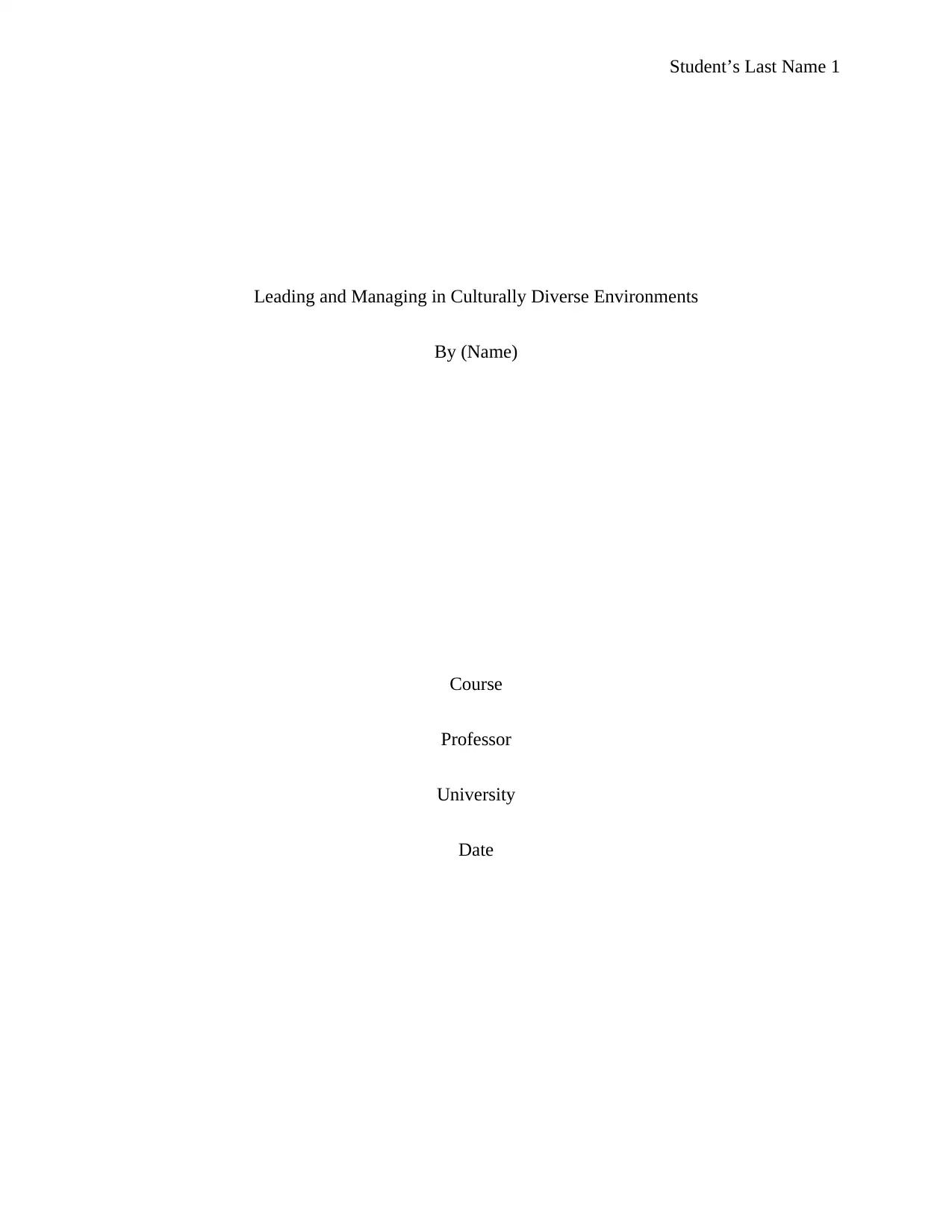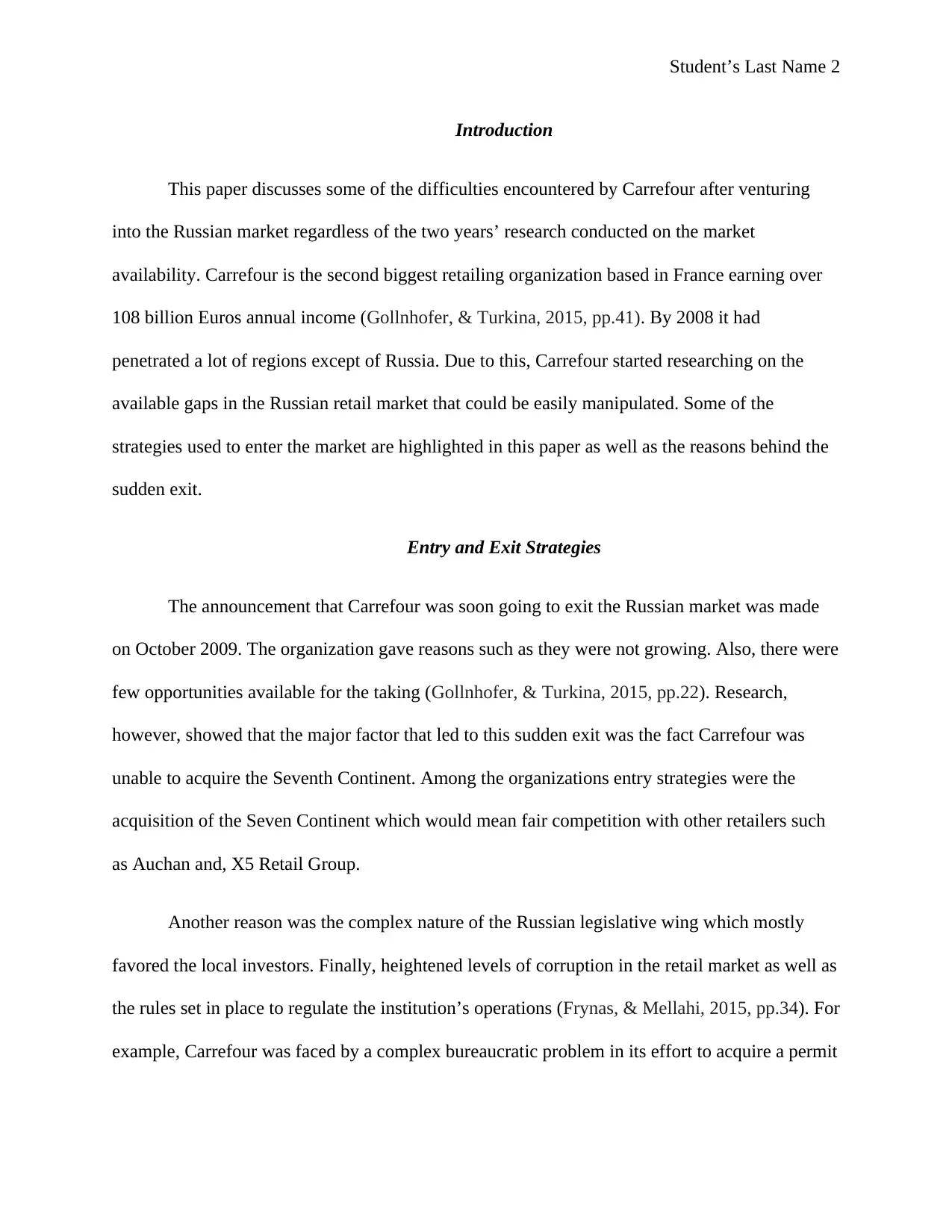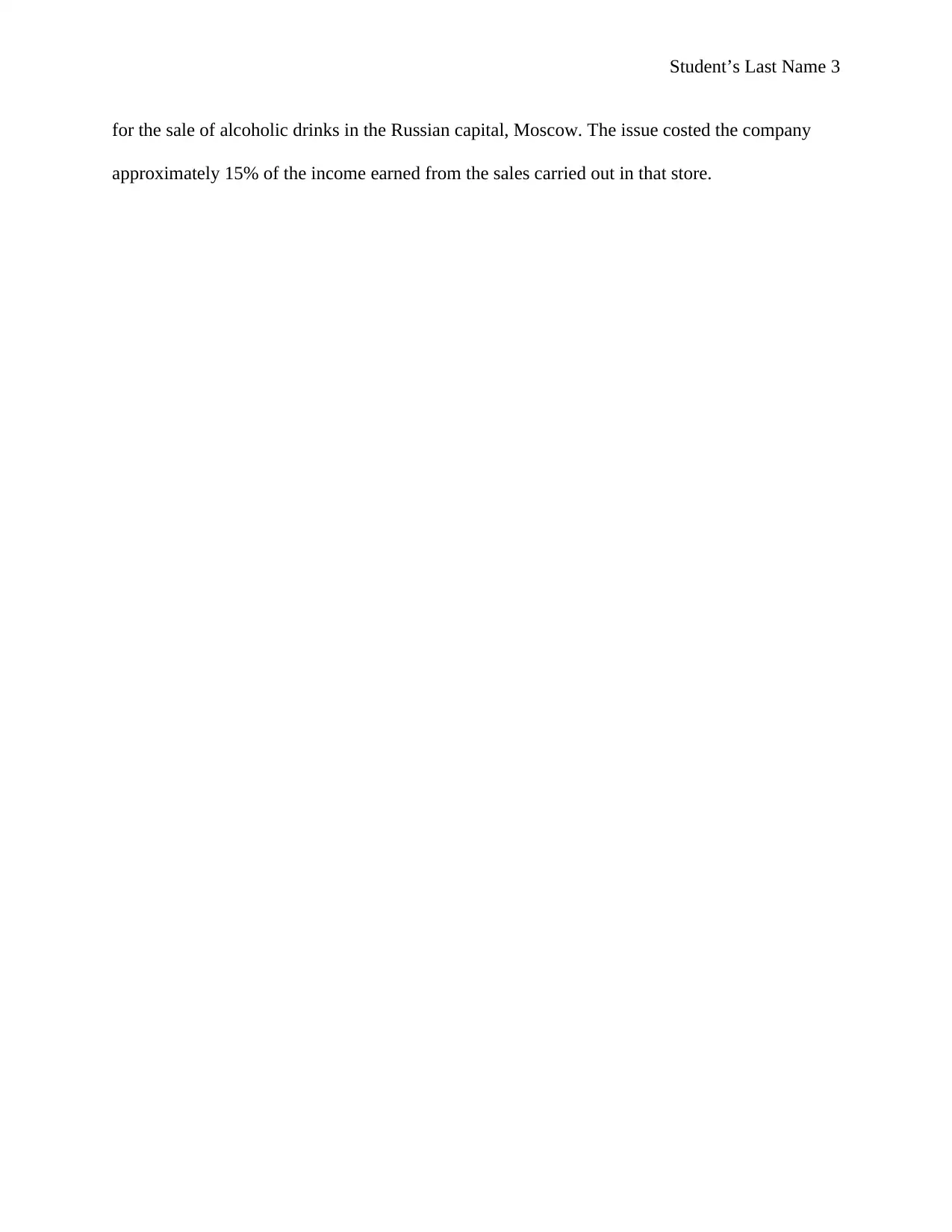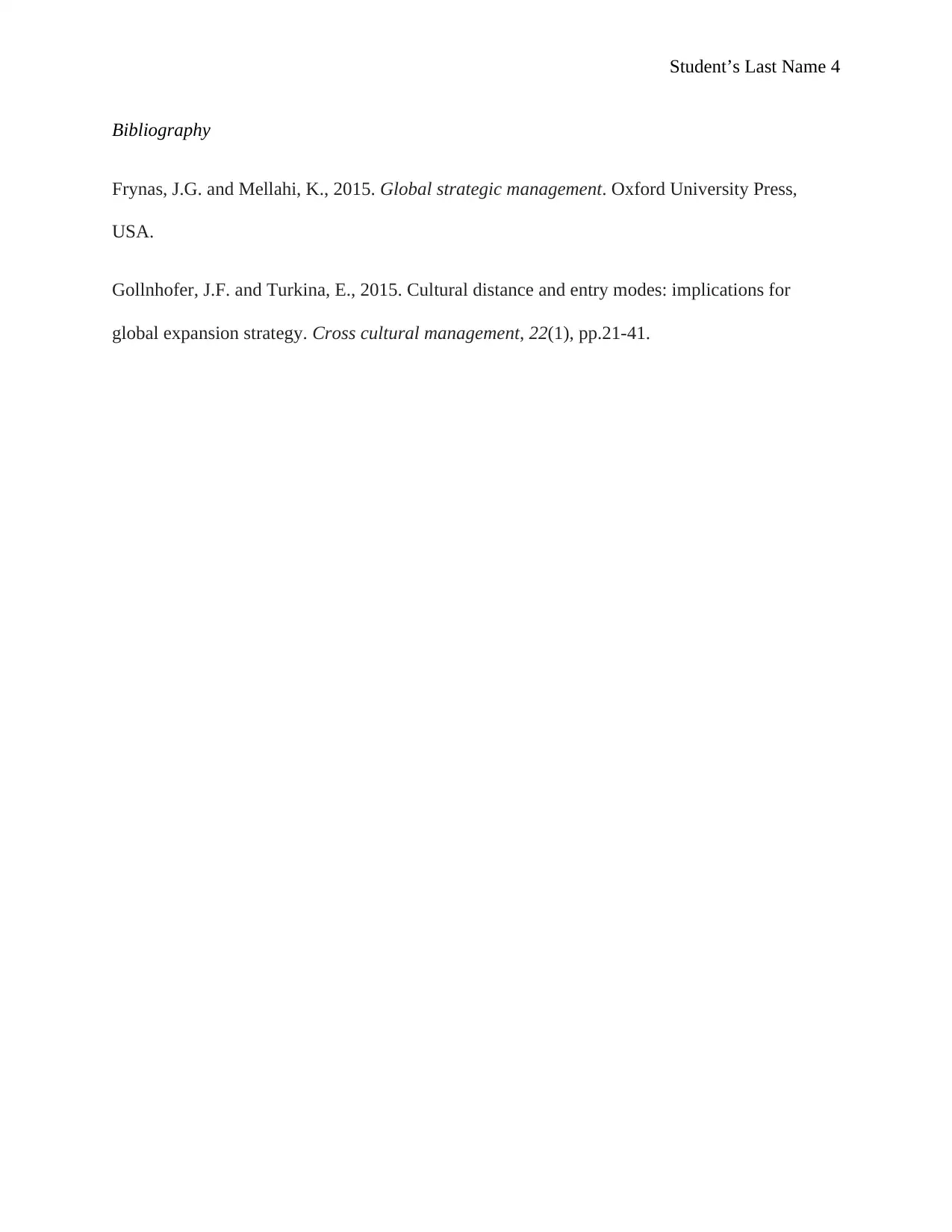Analysis of Carrefour's Entry and Exit in Russian Market
VerifiedAdded on 2020/04/07
|4
|410
|48
Report
AI Summary
This report examines Carrefour's strategic moves in the Russian market. It analyzes the company's entry and exit strategies, highlighting the challenges faced, such as difficulties in acquiring permits and navigating the complex regulatory environment. The report explores the reasons behind Carrefour's decision to withdraw from the Russian market, including the inability to acquire key assets and the impact of bureaucratic hurdles and corruption. The analysis incorporates insights from academic sources, such as journal articles and books, to provide a comprehensive understanding of the factors influencing Carrefour's strategic decisions in Russia. The report focuses on the implications of cultural distance, market complexities, and the importance of effective market entry strategies.
1 out of 4





![[object Object]](/_next/static/media/star-bottom.7253800d.svg)